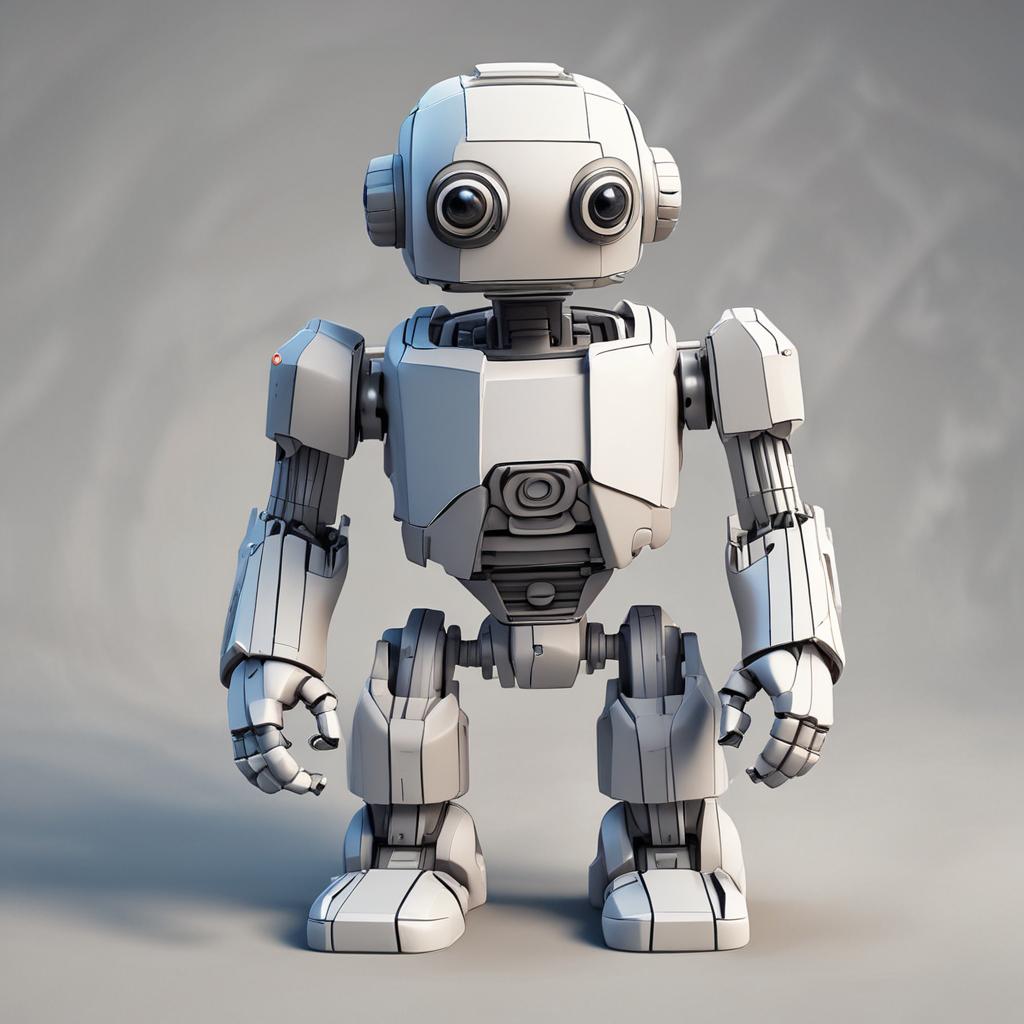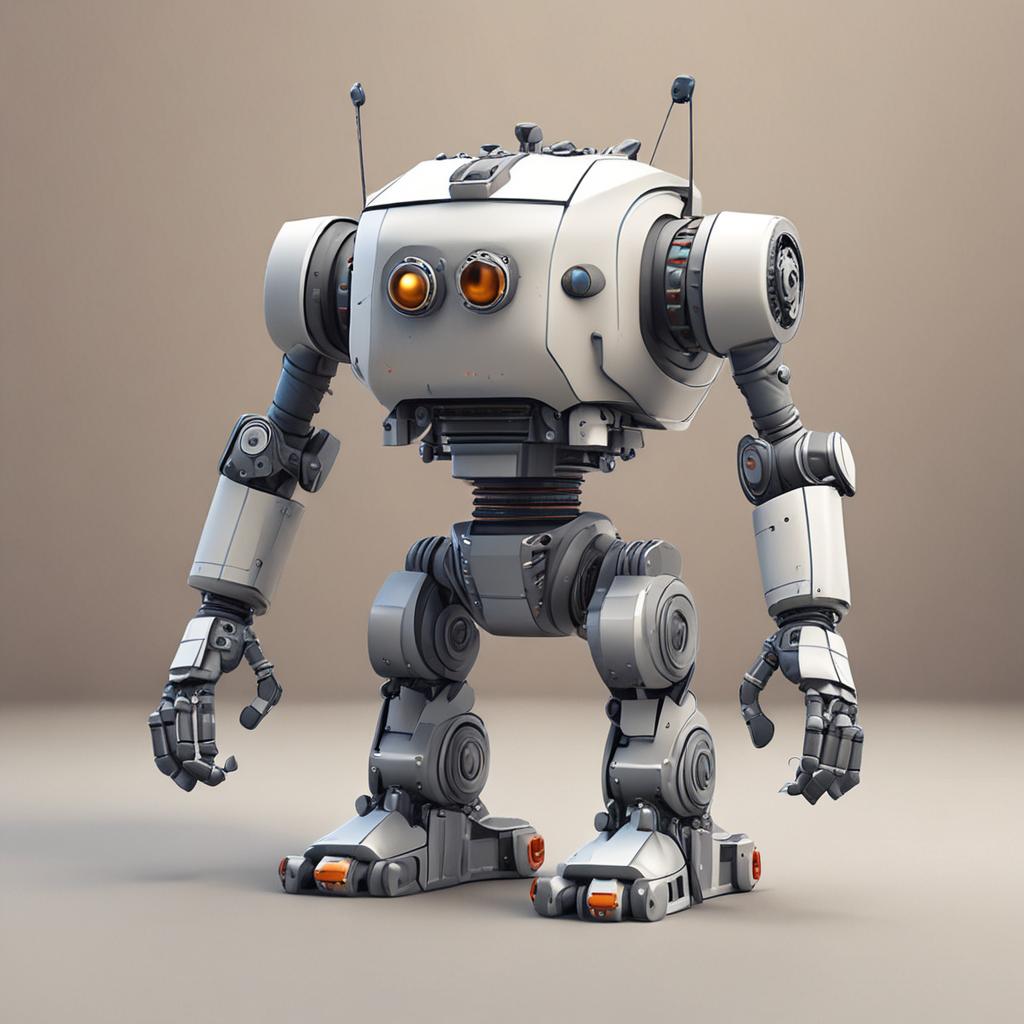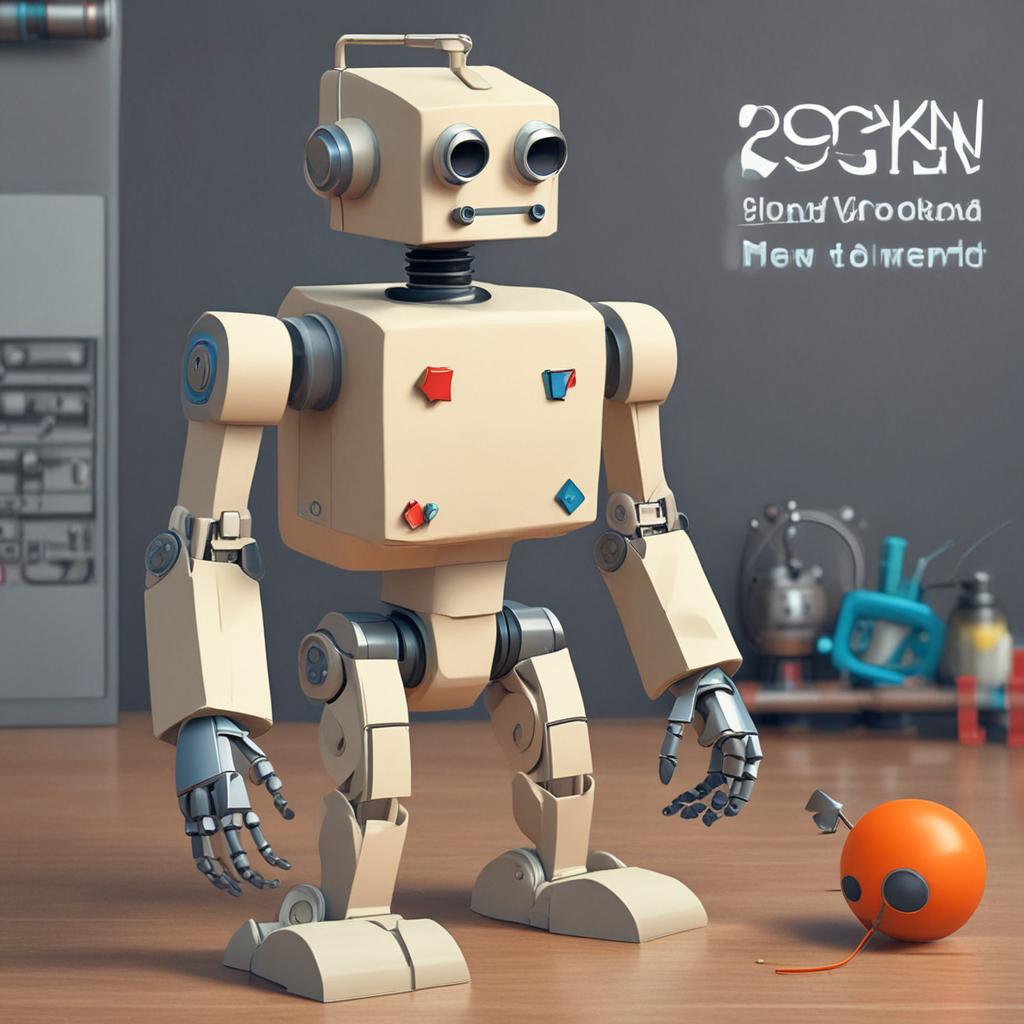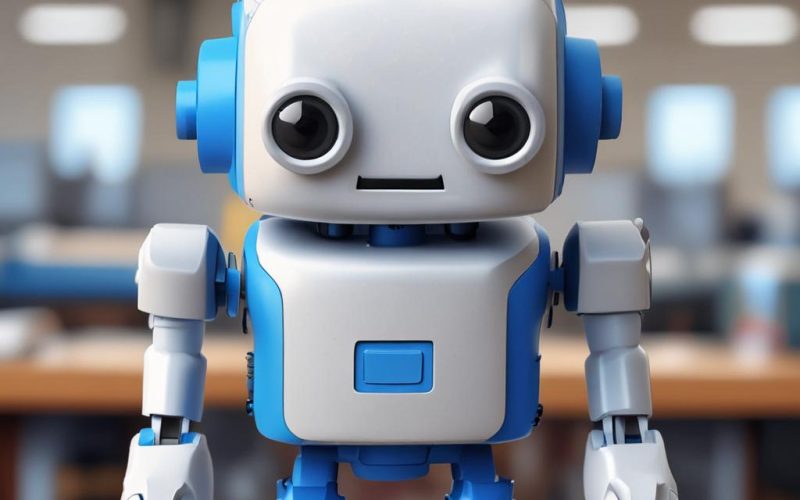Table of Contents Show
Imagine a future where robots are an integral part of our daily lives, assisting with tasks ranging from household chores to complex industrial processes. This future is closer than you think, and with the advent of powerful, user-friendly design and simulation tools like Wokwi and Tinkercad, the world of robotics has never been more accessible. Whether you’re a hobbyist, a student, or a professional, these platforms offer an excellent starting point for designing and simulating your own robotic creations. This guide will walk you through the process of designing and simulating robots using Wokwi and Tinkercad, empowering you to bring your robotic ideas to life.
Historical Timeline
2011
Tinkercad launched, enabling 3D design and simulation.
2020
Wokwi introduced, focusing on electronic circuit simulation.
2022
Integration of robotics simulation features in Wokwi.
2023
Advanced robotics design tools added to Tinkercad.
2025
Phase 5: Comprehensive robotics design and simulation courses available.
Timeline infographic for How to Design and Simulate Robots Using Wokwi or Tinkercad
Before diving into the design and simulation process, it’s crucial to understand some fundamental concepts and components in robotics.
Core Robotics Concepts
Robotics is the interdisciplinary branch of engineering and science that includes mechanical engineering, electronic engineering, information engineering, computer science, and others. Key concepts in robotics include:
- Sensors: These are devices that detect changes in the environment and convert them into electrical signals. Examples include ultrasonic sensors for distance measurement and infrared (IR) sensors for proximity detection.
- Actuators: These components convert electrical signals into physical motion. Common actuators include motors and servos, which are essential for a robot’s movement and manipulation capabilities.
- Microcontrollers: These are small computers that control the robot’s operations. Arduino is a popular example of a microcontroller, widely used in hobbyist and educational settings.
- Programming: Writing code to control a robot’s behavior is a vital skill. Programming languages like C/C++ are often used with microcontrollers to define how the robot should respond to sensor inputs and execute tasks.
Essential Electronic Components
To build a functional robot, you’ll need a basic understanding of essential electronic components:
- Resistors: These components limit the flow of electrical current in a circuit, protecting other components from excessive current. They are crucial for ensuring the safety and proper functioning of your robot.
- LEDs: Light Emitting Diodes are used for visual indicators. They are simple to use and can help you debug your circuit by providing visual feedback.
- Breadboards: These are temporary solderless prototyping boards used to build and test circuits. They allow you to connect components without soldering, making it easy to experiment and make changes.
- Wiring: Proper wiring is essential for a functional circuit. Understanding the basics of wiring, such as connecting components correctly and avoiding short circuits, is crucial.
Introduction to Arduino IDE (for programming)
The Arduino Integrated Development Environment (IDE) is a software application used to write, compile, and upload code to Arduino microcontrollers. Here’s a brief overview:
The Arduino IDE provides a simple and intuitive interface for writing code. The basic components of the Arduino IDE interface include:
- Sketch Window: This is where you write your code. A sketch is an Arduino program, similar to a C++ program.
- Toolbars: These contain buttons for common actions like verifying and uploading code to the Arduino board.
- Serial Monitor: This tool allows you to send and receive data from the Arduino board, useful for debugging.
Basic programming concepts in Arduino include variables, loops, and conditional statements. For example, you can use variables to store sensor data, loops to repeat actions, and conditional statements to make decisions based on sensor inputs.
Designing Your Robot in Tinkercad
Tinkercad is a free, web-based 3D design and simulation tool that is perfect for beginners. Here’s a step-by-step guide to designing the physical structure of your robot in Tinkercad.
Tinkercad Interface Overview
The Tinkercad workspace is user-friendly and includes several key components:
- Workplane: This is the 3D space where you will design your robot.
- Toolbar: Located at the top, it contains tools for creating and manipulating shapes.
- Shape Library: This allows you to access a wide range of pre-made shapes and components.
Navigation in Tinkercad is straightforward. You can zoom, rotate, and pan the workspace using your mouse and keyboard. Basic tools include drag and drop, resize, rotate, and group, which allow you to create and modify shapes easily.
Creating the Robot’s Chassis
Designing a robot chassis involves using basic shapes to create the structure. Here’s how:
- Basic Shapes: Use shapes like cubes, cylinders, and spheres to build the chassis. For example, you can use a cube as the main body and cylinders as legs.
- Combining Shapes: Combine and modify shapes to achieve the desired design. Use the group function to keep related shapes together.
- Stability and Functionality: Ensure the chassis is stable and functional. Consider adding supports and ensuring even weight distribution.
Adding Components (Motors, Sensors)
Integrating virtual components into your design is essential for a functional robot:
- Finding Components: Use the shape library to find and add virtual components like motors and sensors to your design.
- Positioning and Orientation: Position and orient the components correctly. For example, place motors where they will drive the wheels and sensors where they can detect obstacles.
- Wiring and Connections: Consider wiring and connections when placing components. Ensure there is enough space for wires and connectors.
Exporting Your Design
Once your design is complete, you can export it for 3D printing or further use:
- Exporting for 3D Printing: Export the design in a suitable format like STL. This file can be used with 3D printers to create a physical model.
- Other File Formats: Tinkercad supports other file formats like OBJ and SVG, which can be used for different applications like CNC machining or laser cutting.
Simulating Your Robot in Wokwi
Wokwi is a powerful, web-based platform for simulating electronic circuits and robots. Here’s how to simulate your designed robot in Wokwi.

Wokwi Interface Overview
The Wokwi interface is designed for ease of use and includes several key components:
- Code Editor: This is where you write and edit your Arduino code.
- Simulator: This allows you to run your simulation and observe the robot’s behavior in real-time.
- Component Library: This contains a wide range of virtual components that you can use in your simulation.
Navigation in Wokwi is intuitive. You can easily find and add components from the library and use the wiring tools to connect them.
Importing the Robot Design (if applicable)
If direct import from Tinkercad is possible:
- Importing Designs: Follow the import instructions to bring your Tinkercad design into Wokwi.
If direct import is not possible, recreate the circuit virtually using Wokwi’s component library. This involves adding the same components and connections as in your Tinkercad design.
Wiring the Circuit
Connecting the components virtually is crucial for a functional simulation:
- Wiring Tools: Use Wokwi’s wiring tools to connect the components according to your circuit diagram. Ensure clean and organized wiring for better visualization.
- Correct Wiring Diagram: Follow the correct wiring diagram to avoid errors. Double-check connections to ensure they match your design.
Programming the Robot (Arduino Code)
Writing code to control your robot is essential. Here’s a basic example:
- Basic Code Example: Provide a simple Arduino code to control the robot, such as moving forward, backward, or turning. For example:
“`cpp
// Define motor pins
const int motor1Pin1 = 3;
const int motor1Pin2 = 4;
const int motor2Pin1 = 5;
const int motor2Pin2 = 6;
// Setup function
void setup() {
// Set motor pins as outputs
pinMode(motor1Pin1, OUTPUT);
pinMode(motor1Pin2, OUTPUT);
pinMode(motor2Pin1, OUTPUT);
pinMode(motor2Pin2, OUTPUT);
}
// Loop function
void loop() {
// Move forward
digitalWrite(motor1Pin1, HIGH);
digitalWrite(motor1Pin2, LOW);
digitalWrite(motor2Pin1, HIGH);
digitalWrite(motor2Pin2, LOW);
delay(1000);
// Turn right
digitalWrite(motor1Pin1, HIGH);
digitalWrite(motor1Pin2, LOW);
digitalWrite(motor2Pin1, LOW);
digitalWrite(motor2Pin2, HIGH);
delay(1000);
}
This code defines the motor pins and controls the robot’s movement. Encourage users to experiment with the code to achieve different behaviors.
Running the Simulation and Debugging

Starting the simulation and debugging any issues is the final step:
- Starting Simulation: Click the run button to start the simulation and observe the robot’s behavior. Use the debugger to identify and fix errors in the code.
- Debugging Tips: Provide tips for troubleshooting common simulation issues, such as checking for loose connections or incorrect code logic.
Alternative Approaches and Advanced Techniques (Optional)
For those looking to explore more advanced topics, here are some suggestions:
Using Different Sensors and Actuators
Experiment with alternative sensors and actuators to enhance your robot’s capabilities:
- Alternative Sensors: Consider using line followers, distance sensors, or inertial measurement units (IMUs) for more complex tasks.
- Alternative Actuators: Explore stepper motors or solenoids for precise control and movement.
Integrating More Complex Algorithms
Advanced programming techniques can add more intelligence to your robot:
- PID Control: Use Proportional-Integral-Derivative (PID) control for precise and stable movement.
- Path Planning: Implement algorithms for autonomous navigation and obstacle avoidance.
Combining Wokwi and Real-World Components

Simulation is a great way to prepare for real-world implementation:
- Testing and Refinement: Use simulation to test and refine your designs before building them in the real world. Consider real-world limitations and constraints, such as power consumption and physical size.
Conclusion
Designing and simulating robots using Wokwi and Tinkercad opens up a world of possibilities for learning and experimentation. These platforms provide an accessible and educational environment for beginners and enthusiasts alike. By following the steps outlined in this guide, you can bring your robotic ideas to life, experiment with different designs, and gain valuable experience in the field of robotics. So, dive in, start designing, and let your creativity soar!
Frequently Asked Questions (FAQ)
Is Wokwi completely free to use?
Wokwi offers a free tier with basic features. However, there may be limitations on the number of projects or advanced features available. For more extensive use, consider exploring their paid plans.
Do I need any prior programming experience to use Wokwi or Tinkercad?
Basic programming knowledge is helpful but not essential for getting started. Both platforms are designed to be user-friendly, and there are plenty of tutorials and resources available to help you learn as you go.
Can I use Wokwi and Tinkercad for more complex robotics projects?
Wokwi and Tinkercad are great for beginners and educational purposes. For more complex projects, you might need to consider other tools and platforms that offer more advanced features and capabilities.
Can I export my Wokwi simulations to real hardware?
Exporting Wokwi simulations to real hardware involves transferring the circuit diagram and code to physical components. This process requires careful planning and consideration of real-world constraints. Follow the guidelines provided by Wokwi and the Arduino community for a successful transition.
Where can I find more resources and tutorials for Wokwi and Tinkercad?
Both Wokwi and Tinkercad have official documentation and community forums where you can find tutorials, examples, and support. Additionally, online platforms like YouTube and educational websites offer a wealth of resources to help you learn and master these tools.




